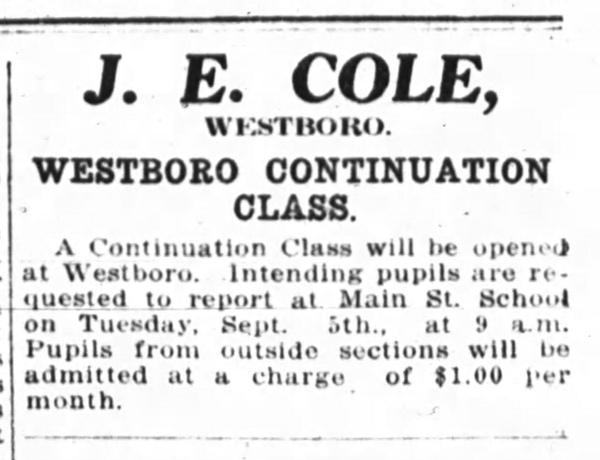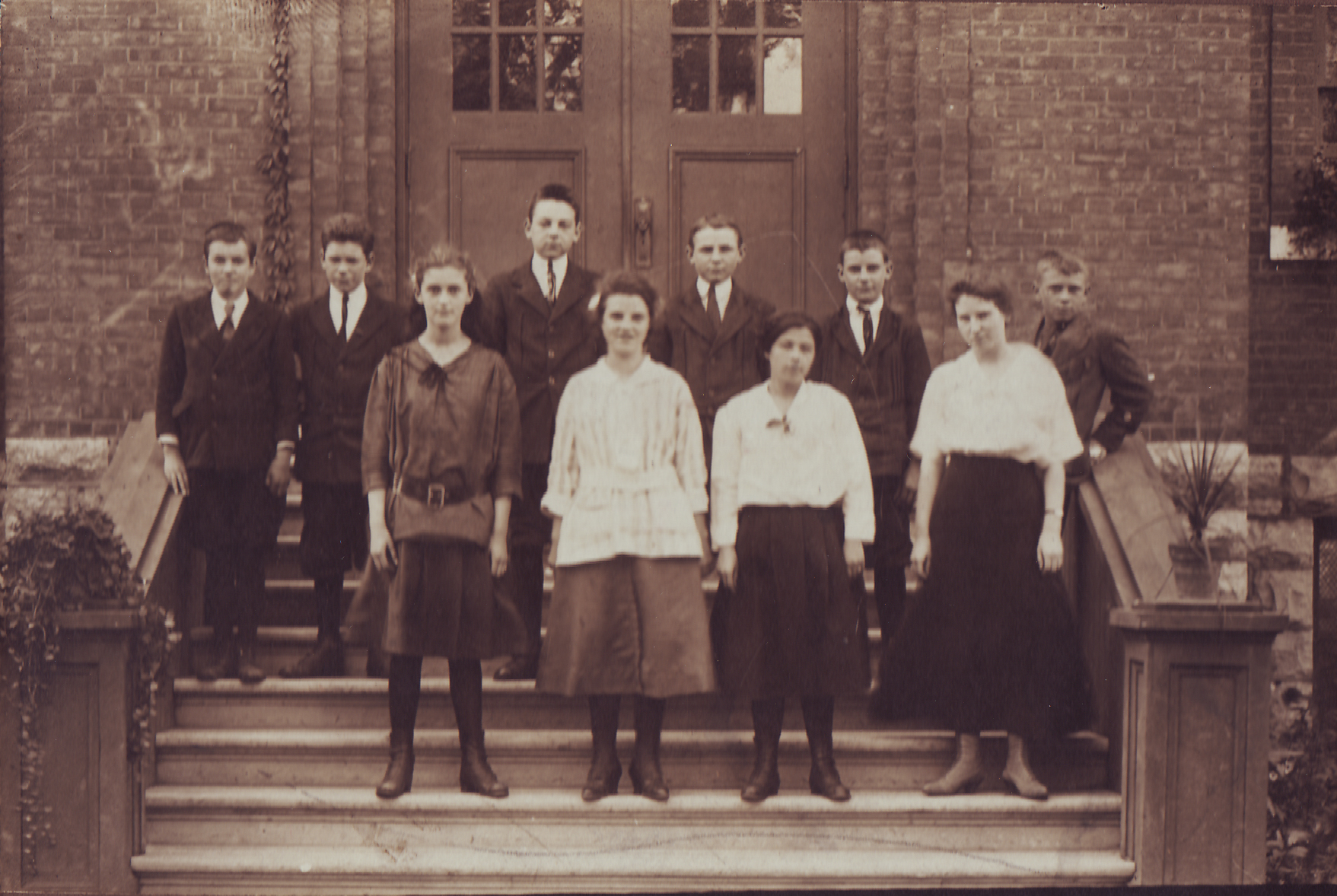By Dave Allston –
The building we know as Nepean High School will be celebrating a major milestone in seven years (2023) for its 100th anniversary. KT readers may be surprised to learn that this month, September 2016, Nepean High School – the institution – actually turns 100 years old.
On September 5, 1916, the first secondary school class for Nepean Township opened up in a single classroom at the old Churchill School (then known as Westboro Public School). A group of just nine students comprised what was called a “continuation class” for Nepean.
However the background on how secondary school arrived in Kitchissippi is complex – it’s establishment was not simple – but this step was a significant one and laid the foundation for the rapid growth Nepean High School would experience.
Advanced education in Nepean was not a priority in the 19th century. The vast majority of the township was rural and children were needed at home on the farm. Very few continued their schooling beyond the lower grades.
Carleton County – of which Nepean was part – did not have a high school. Options for students with educational aspirations were limited. They had to either travel, or move, to Ottawa to attend the Ottawa Collegiate Institute (now known as Lisgar). Arnprior, Almonte, Carleton Place, Kemptville, Smiths Falls and Vankleek Hill, all had high schools by the 1890s. Carleton County at the time was one of the largest, wealthiest and most populated counties in Ontario. It was debt-free yet had no high school, while some adjoining counties had as many of five (paid in part by the students from Carleton County!).
Ottawa Collegiate Institute (OCI) opened as a grammar school in 1843, became a high school in 1871, and then a collegiate institute in 1873. Traditionally, collegiate institutes focused on arts and humanities for students intending to attend university, whereas high schools focused on vocational and science programs for those planning to enter the workplace upon graduation. Over time the roles blurred and eventually they merged in a single secondary school system. The term ‘Collegiate Institute’ largely has disappeared, remaining only for the oldest and most established secondary schools.
In terms of transportation, attending OCI would not have been a hardship for residents who lived in Kitchissippi after the arrival of streetcars in 1900, but for students living well off the streetcar line it would have likely required an expensive move into Ottawa.
The first serious talk of a high school for Nepean began in 1896. OCI was overcrowded and had little interest in accommodating extra students from rural areas. They also raised the fees for rural students to $40 per year, the highest fees in Ontario. Fees for city student fees at this time increased to $25. These fees, along with the cost of books, plus room and board, made it very difficult for most children of Nepean farmers to get a higher education.
In 1896, the province empowered counties to tax all residents of the county to cover the difference in rural fees, but Carleton County residents would have none of it. Nepean residents demanded that if OCI would not charge rural students on equal footing, Nepean Council must build a high school. Leading citizens such as McKellar, Holland, Cole and Heney led the charge.
The question of where the new Nepean high school should be located was a seemingly endless battle. At one point, it was decided that Hintonburg was the optimal location particularly due to its proximity to the Experimental Farm. Establishing a top-notch agricultural class, which OCI could not match, was seen as a big advantage even though Hintonburg had recently seceded from Nepean Township. OCI later offered a potential partnership in which a junior collegiate would be built in Hintonburg for younger grades, with older students attending downtown. However, Nepean residents could not agree on the sharing of construction costs of a high school, wherever it may be, and the expense was still hotly opposed by the vast majority.
The issue was temporarily resolved by OCI agreeing to accept non-resident students for the same fees as city students. A planned expansion in 1903 would help handle the additional pupils.
Additionally, the Ministry began to allow for the establishment of continuation classes in larger centres where the need was high. Thus after a push for several years within the Westboro area, the first class was finally established in the fall of 1916. Students in Westboro could attend for free; those from outside the school boundaries would be charged $1 per month.

The first group of students, all from the Westboro area, were: Ernest Halpenny (13-years-old), Carl Hawn (14), Harold Leech (14), Willie Moore (14), Ethel Pell (16), Willie Pell (14), Muriel Rich (15), Catherine Richards (13), and Douglas Young (15). Their teacher was Miss King. Ernest Halpenny went on to become the most well-known of the group, becoming an MP in 1957, later a Cabinet minister and eventually Secretary of State for Canada.

The continuation school occupied one room in the Westboro Public School for its first year and later moved to the then-new, original Broadway (Broadview) School. The school proved popular, and the number of pupils increased each year until soon the continuation school comprised four forms (in other words, grades) and occupied the entire upper floor of Broadview.
A major change to the education system in Ontario occurred in 1919 when the government passed the Adolescent School Attendance Act. The Act came into force on September 1, 1921, assuring the need for a separate high school in Nepean soon after.
A High School District was formed by Carleton County, which comprised about two-thirds of Nepean Township, and included the school sections of Woodroffe, Westboro, Britannia, Bells Corners, March Road, Eagleson’s Corners, Greenbank, City View, Merivale, River Road and Carlington. Construction on the new school began in the spring of 1922. In September 1923, the building was complete and the continuation school became a high school. At its opening, Nepean High School had 195 students.
Considering that Nepean High School enrollment is now at the 1,120 mark, it is hard to imagine that it had its beginnings 100 years ago with a single class of nine students. It is thanks to the progressive perspective of the prominent citizens of Nepean over a century ago that Nepean High School exists today. Although it is no longer located inside the borders of Nepean, it is a tangible, lasting legacy that connects us to our early days as a rural township.
Dave Allston is a local history buff and author of The Kitchissippi Museum. His family has lived in Kitchissippi for six generations. Do you have stories to share about the area? We’d love to hear them! Send your email to stories@kitchissippi.com.